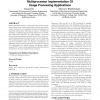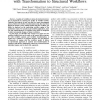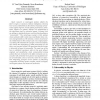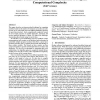250 search results - page 17 / 50 » Quantitative Association Analysis Using Tree Hierarchies |
CODES
2006
IEEE
14 years 1 months ago
2006
IEEE
Modern embedded systems for image processing involve increasingly complex levels of functionality under real-time and resourcerelated constraints. As this complexity increases, th...
EDOC
2006
IEEE
13 years 11 months ago
2006
IEEE
Abstract-- Analysis of workflows in terms of structural correctness is important for ensuring the quality of workflow models. Typically, this analysis is only one step in a larger ...
ATAL
2004
Springer
14 years 24 days ago
2004
Springer
Much research in multi-agent systems reflects the field’s origins in classical artificial intelligence, showing how various refinements to the internal reasoning of individual a...
KBS
2002
13 years 7 months ago
2002
In this paper, a hybrid learning approach named HDT is proposed. HDT simulates human reasoning by using symbolic learning to do qualitative analysis and using neural learning to d...
POPL
2009
ACM
14 years 8 months ago
2009
ACM
This paper describes an inter-procedural technique for computing symbolic bounds on the number of statements a procedure executes in terms of its scalar inputs and user-defined qu...




